Teach the principles of PCR with a Bento Lab classroom kit.
- Simple steps, Fast results From start to results in 2 periods
- Designed for the classroom Suitable for 32 students
- Scenario-based Learning Investigate real world research problems
The complete biotech lab for your classroom

The complete biotech lab for your classroom
The students are so excited to use Bento Lab, and they really get a physical grasp of the theory.
Plus, I love that it’s so quick to set up!
Head of Science, Leicester
Teach the principles of PCR with a Bento Lab classroom kit.

Intense Day2 of #MolEcol23 module ended successfully. 7 hrs sampling of sites along the #Kinzig river. Then students processed their samples & started (e)DNA extraction 🙏👍🏼
— Florian Leese (@leeselab) August 29, 2023
Much longer than a regular teaching day – but that can happen if one includes real research in teaching. pic.twitter.com/iPsPWymHq6
One of the most impressive pieces of equipment we have are @theBentoLab boxes. These devices function as a portable molecular biology lab, and combine five pieces of equipment into one! 🧪 pic.twitter.com/POOkn5DCpQ
— Monash Tech School (@MonashTS) June 12, 2019
Wildlife Ecology and Conservation Students have been looking into the DNA of fungal samples with amazing Bento Lab equipment and @LostFoundFungi @pyrenopeziza ! Find out more about this course at our next open day- Saturday 16th November (10am – 2pm) https://t.co/kgel2Pwfjb pic.twitter.com/eOXArY49Q6
— University Centre Sparsholt (@UC_Sparsholt) November 14, 2019
“Bento Lab is different to learning in class with a textbook. You actually get to see the process, and it’s more visual, so you remember it better.”
Year 13 Student
King Solomon Academy, London
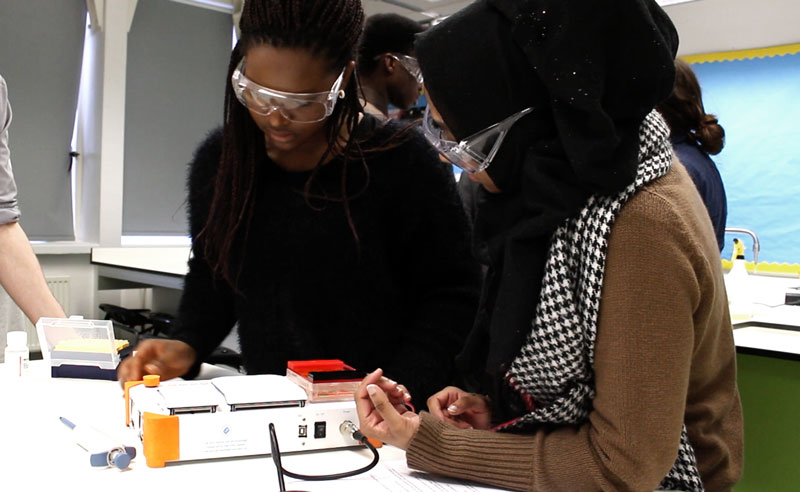
Challenge your students to apply key concepts in genetics, biotechnology and molecular biology to real world research questions.
Loading the gel to look for evidence of Nosema in our bee samples using the @theBentoLab kit. @e_j_duncan #LeedsMedTrip pic.twitter.com/Dj0chqGLOu
— Chris Hassall (@katatrepsis) April 2, 2019
Meat quality is a serious issue in the food industry. How sure are you that your burger or supermarket lasagne is really made of beef and not other types of meat? Identify different types of meat samples by studying mitochondrial DNA.
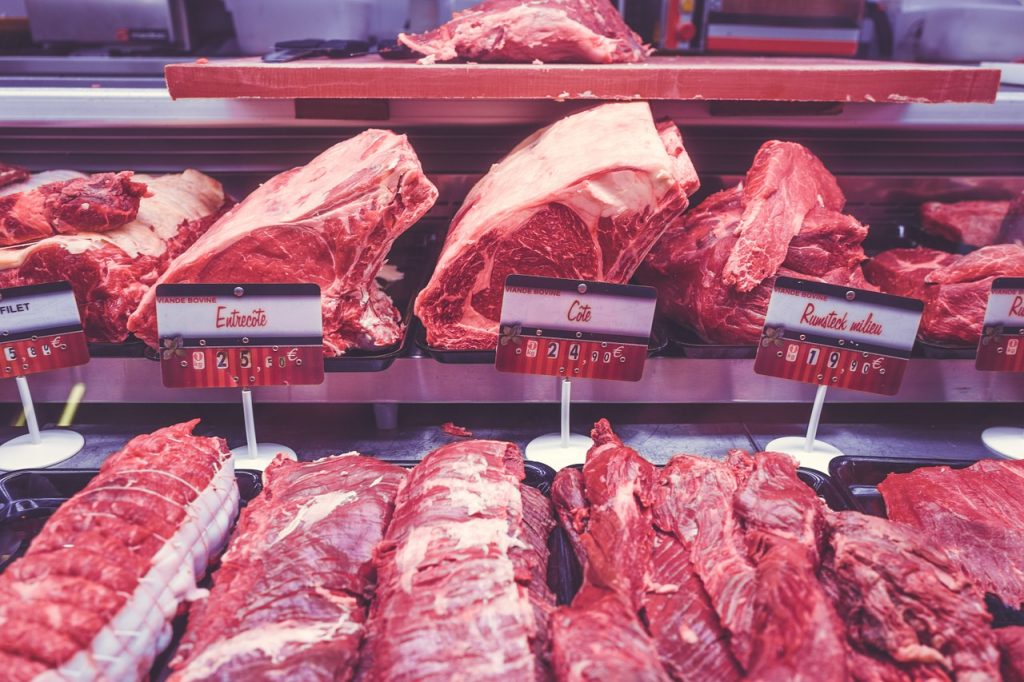
For some people, lactose intolerance is related to genetics. This project explores the genetic variation of the gene MCM6, which controls the expression of the lactase enzyme.

Humans influence plant genetics by farming, selective breeding, and now through genetic modification. Explore this scientific technique, and discuss the societal and political landscape surrounding it.

Section 8.1 (g) Understanding of electrophoresis apparatus, and demonstrating the technique.
Section 3.8.4.1 Understanding of how polymerase chain reaction (PCR) works and its application in DNA analysis.
Section 3.8.4.3 Understanding of the use of genetic fingerprinting in the fields of forensic science, medical diagnosis, animal and plant breeding.
Section 6.1.3 Manipulating genomes (e) the principles and uses of electrophoresis for separating nucleic acid fragments or proteins
Section 6.1.3 Manipulating genomes (d) Understanding of how polymerase chain reaction (PCR) works and its application in DNA analysis.
Section 6.1.3 Understanding of the use of genetic fingerprinting in the fields of forensic science, medical diagnosis, animal and plant breeding.
Section 6.4 Core Practical 14 Understanding of electrophoresis apparatus, and demonstrating the technique.
Section 6.3 Understanding of the use of genetic fingerprinting in the fields of forensic science, medical diagnosis, animal and plant breeding.
Section 6.4 Understanding of how polymerase chain reaction (PCR) works and its application in DNA analysis.
Section 5(d) Understanding of the use of genetic fingerprinting in the fields of forensic science, medical diagnosis, animal and plant breeding.
Section 5(d) Understanding of how polymerase chain reaction (PCR) works and its application in DNA analysis.
Section 7. Application of reproduction and genetics: (d) the use of PCR and electrophoresis to produce a genetic fingerprint; the forensic use of genetic fingerprinting.
Demonstrate electrophoresis and PCR with confidence in the classroom with a complete lab solution. Lead your students through real experiences of exciting, current technology.
Bento has arrived and it is fantastic! Thank you so much for creating this product and bringing molecular biology to the classroom
Luke, Science Teacher
Hertfordshire
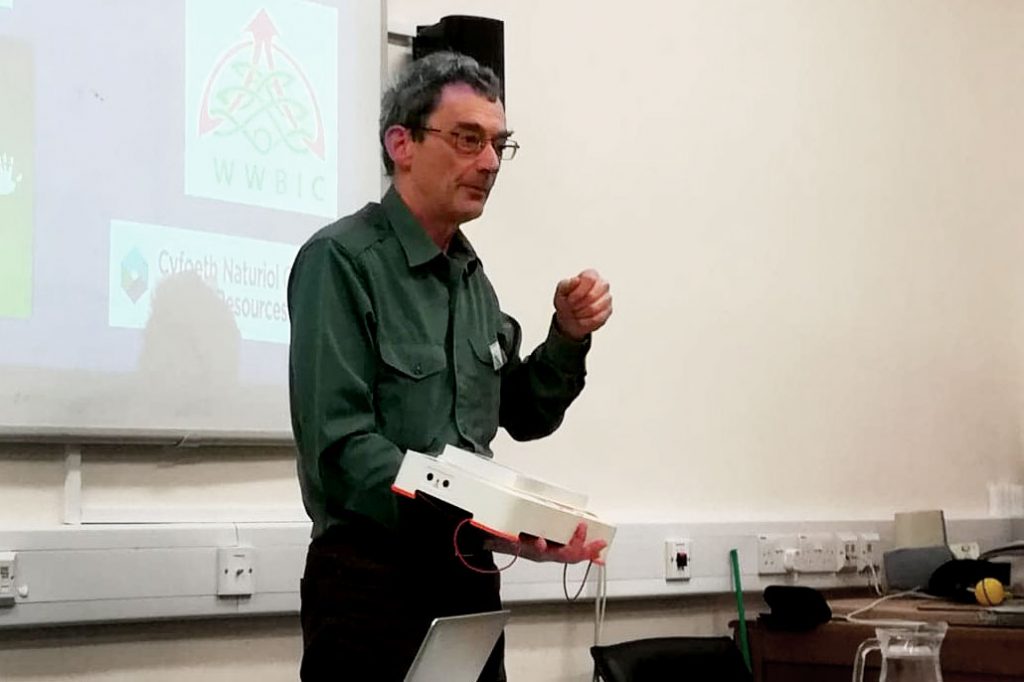
Introduce your students to DNA technologies through inspiring
practicals that cover inheritance, genetic modification and DNA barcoding.
Sign-up for free training courses with Bento Lab.
Enquire Teacher Training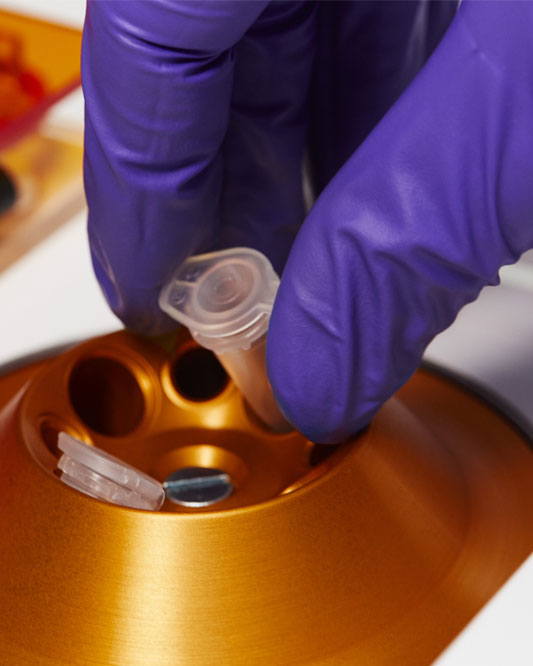
DNA Extraction
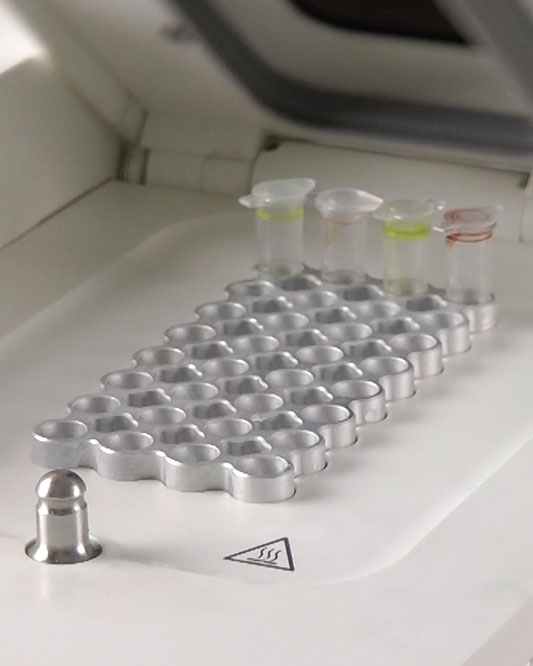
Polymerase Chain Reaction (PCR)
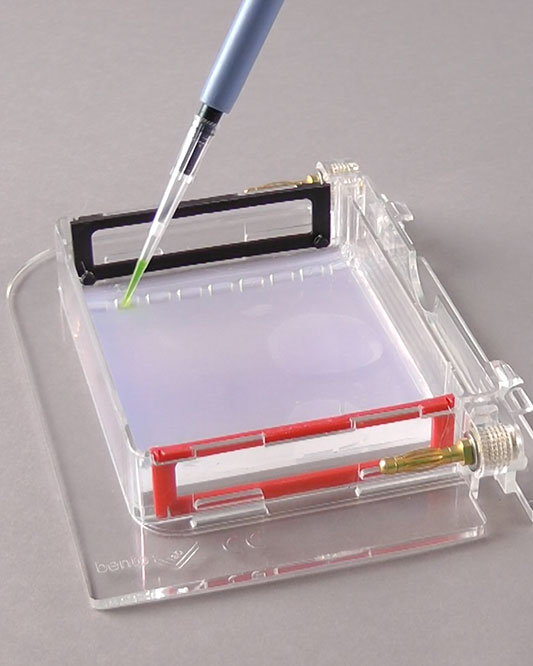
DNA Gel Electrophoresis
